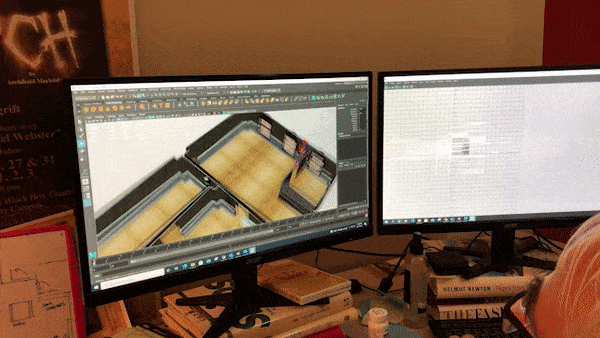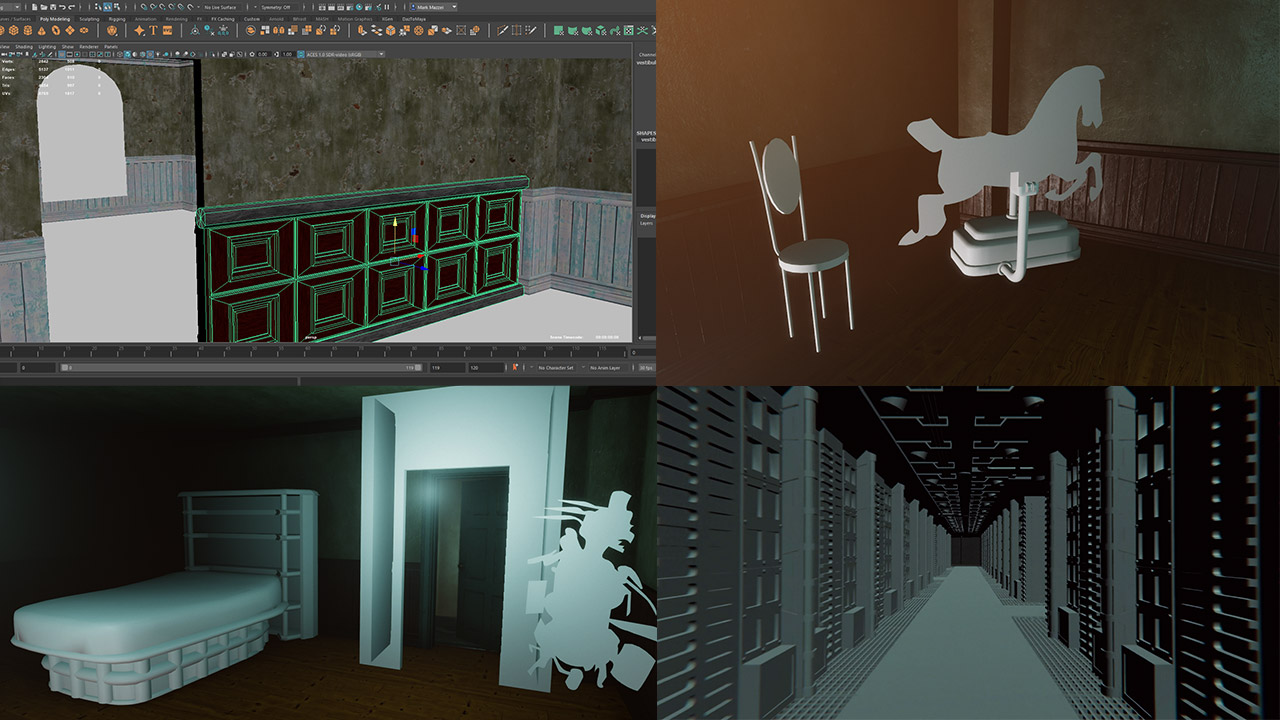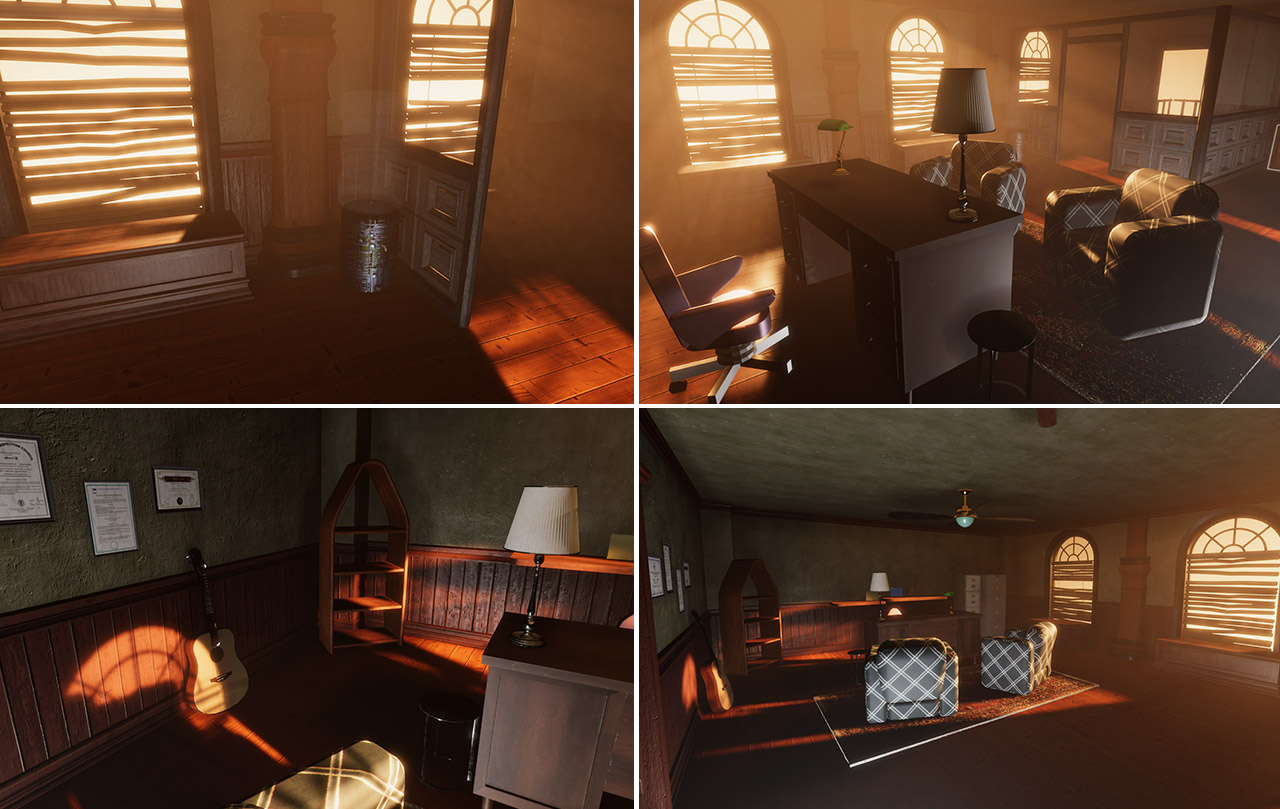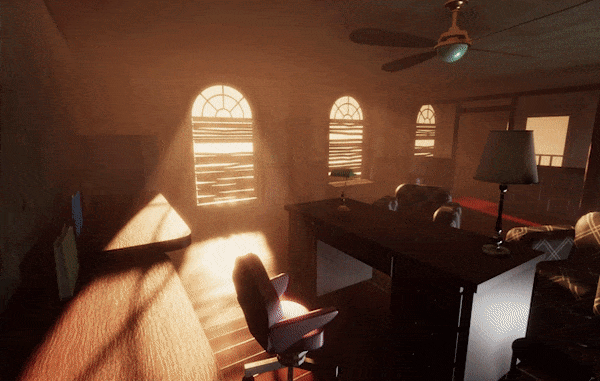In an earlier update, we mentioned one of the primary goals of The Pandora Directive’s 25th Anniversary remaster was to ensure the new game retains the original’s look, feel, and soul. To achieve this, we’ve had to dig deep into the archives to retrieve every building, prop, material, and asset we could find to serve as the basis of the reconstruction. In addition to these assets, we have been spending many hours playing through the game, capturing screenshots, and reviewing the published game guides. It has been a trip down memory lane for the entire team.
Throughout this journey, we have realized the modern approach to environmental design, especially using modern engines like Unity 2021, requires a few liberties to be taken on the original design, especially when it comes to layout. Let’s take the Ritz Hotel, for example. In the original 1996 Pandora Directive, every room in Tex’s Office (and the office itself) were separate loads. Meaning, the space could be treated like a Tardis, where the interior was impossibly larger than the building in which it sat. The result is slight adjustments to the architectural layout of some rooms, but with the benefit of having many more areas and environments loaded up in real-time without the need for excessive load screens.

Old Meets New
Many of the original game assets still exist in our archives in one form or another. Most objects were modeled in either Max or Maya, optimized to low-poly variants, then imported into the custom-designed “Virtual World” engine. Many of these models still exist in their original high-poly form, which acts as an excellent base for upscaling and retexturing the models to fit in the higher definition remastered environments. However, a good number of the environmental objects were “spinners,” two-dimensional objects designed always to face the camera. So naturally, these objects are either being re-created from scratch or replaced with new or re-imagined versions if full 3D.

Unity Engine’s High Definition Render Pipeline
The team at Big Finish Games has chosen to work in Unity Engine 2021’s HDRP to get the most out of the visuals for the new game. The platform enables us to present the new levels with a staggering amount of detail, polish, and atmosphere. There was a slight learning curve ensuring textures and models adhered to the new platform, but within a few days, the team became experts on working in the new pipeline and could see immediate results!


We have continued to take liberties when it comes to the general architecture of the environments as well. Using the Roswell complex as an example, much of the original design resulted from 1996 software and hardware limitations. These days, we can create much more detailed environments using many more props and set-dressings, in addition to higher-poly structures. So, while the overall layout and style should be very similar to the original levels, the designs will be completely refurbished and modernized.
This results in much more impactful scenes that are closer to the original vision (and Aaron’s books)…
In the Roswell Level 3 hangar demonstration, we are also experimenting with real-time camera motion capture as an option for using a hand-held camera for some scenes and scripted events. These demonstrations are part of our experimentation process, are subject to change, and do not represent the final product.
Overall, we’re incredibly proud of what we’ve achieved during this experimentation phase, and we’re looking forward to expanding on the potential of this remaster and keeping players updated on our progress!
Oh, and in case you missed it when it was published only to social media, here is the Mayan Temple work in progress video we posted back in June…
